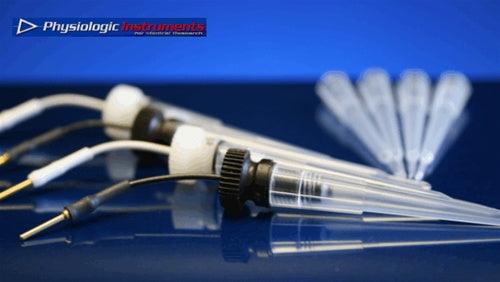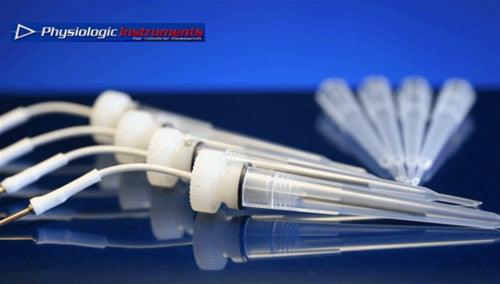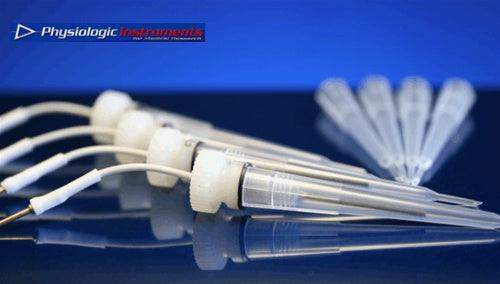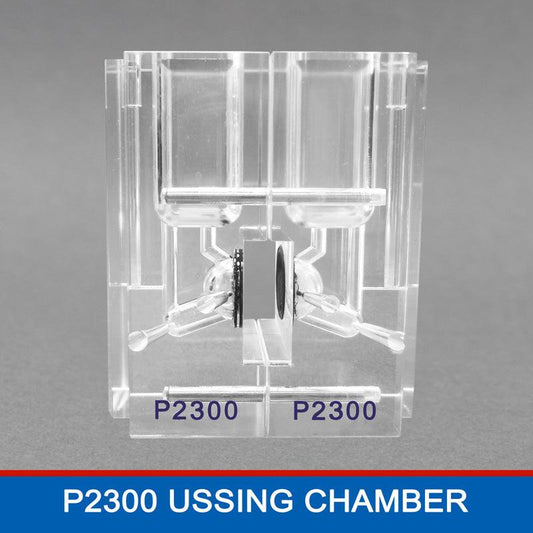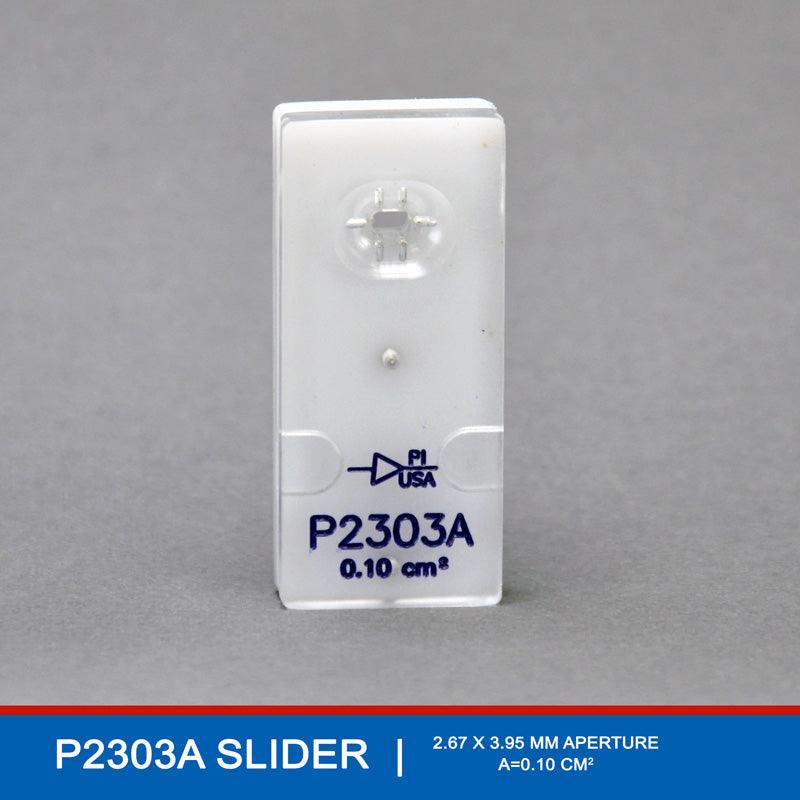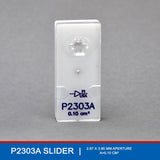P2303A EasyMount Ussing Chamber Slider
The P2303A Ussing Chamber Slider from Physiologic Instruments is precisely designed to support high-precision physiological studies on small tissue specimens, including mouse intestine and bladder. With a 2.7 x ~4 mm aperture and an optimized 0.10 cm² exposure area, this specialized slider offers a refined platform that enhances experimental accuracy and reproducibility for delicate samples. Its design ensures that tissues receive uniform exposure, contributing to more reliable data in studies focused on transport and barrier function.
This slider is compatible with the EasyMount Chamber Model P2300 and incorporates six mounting pins for secure sample stabilization without compromising tissue integrity. The P2303A’s robust yet sensitive configuration allows researchers to handle and maintain small, fragile tissues with confidence, reducing mechanical stress and improving the quality of results. Tailored to the needs of specialized physiological research, the P2303A Ussing Chamber Slider exemplifies advanced engineering for laboratory environments demanding precision and dependability.
⦿ To be used with P2300 EasyMount Ussing Chambers- Regular price
- $240.00
- Regular price
-
- Sale price
- $240.00
- Unit price
- per
EasyMount Slider Details

P2303A EasyMount Ussing Chamber Slider for Tissues Such As Mouse Intestine
APETURE SIZE: 2.7x~4MM | Membrane Area = 0.10 cm² | With Mounting Pins
Designed specifically for researchers working with small tissue specimens, the P2303A Ussing Chamber Slider from Physiologic Instruments brings a new level of precision and ease to physiological studies. Featuring a 2.7 x ~4 mm aperture with a perfectly optimized 0.10 cm² exposure area, this slider is tailored for specimens like mouse intestine and bladder, ensuring focused and reliable results.
Engineered for seamless compatibility with the EasyMount Ussing Chamber Model P2300, the P2303A ussing chamber slider insert includes six secure mounting pins, enhancing sample stability without compromising tissue integrity. The slider's meticulous design supports delicate specimens, offering researchers a superior solution for reproducible and accurate measurements in every experiment.
Equip your lab with the P2303A EasyMount Ussing Chamber Slider—where small tissue studies meet precision engineering.
P2303A Slider Instructions
To use the P2303A EasyMount Ussing Chamber Slider in an experiment, follow these steps to ensure proper handling and optimal experimental outcomes for small tissue specimens like mouse intestine or bladder:
-
Preparation of the Tissue Sample: Begin by carefully excising the tissue sample from the specimen, taking care to minimize physical stress. Prepare the sample to fit the 2.7 x ~4 mm aperture of the P2303A slider. It's essential to ensure that the tissue is smooth and properly aligned with the aperture area, as this is key to obtaining consistent and accurate results.
-
Mounting the Tissue on the Ussing Chamber Slider Insert: Position the tissue over the slider’s 0.10 cm² aperture, ensuring it is centered and covers the entire opening. Gently secure the tissue using the six mounting pins provided with the P2303A slider. The mounting pins are designed to hold the tissue firmly, which is crucial for maintaining tissue integrity throughout the experiment. Align the top of the slider onto the pins and compress the slider together.
-
Inserting the Slider into the EasyMount Ussing Chamber: With the tissue securely mounted on the slider, place it into the Chamber (Model P2300). Confirm that the slider is correctly aligned within the chamber to maintain consistent exposure across the tissue. The EasyMount design provides stability, ensuring that the tissue remains in place and that there is an even flow of buffer solutions on both sides of the tissue.
-
Conducting the Experiment: Once the slider and chamber are assembled, fill the Ussing chamber reservoirs with the appropriate physiological buffers. Maintain a controlled environment, including temperature and pH, according to your experimental protocol. You can then initiate electrophysiological measurements, such as transepithelial potential difference (TEPD) or short-circuit current (Isc), to analyze the transport properties or barrier function of the tissue.
-
Post-Experiment Handling: After completing the experiment, carefully remove the slider from the chamber and detach the tissue from the pins. Proper cleaning and maintenance of the P2303A slider and the Ussing chamber are essential to ensure the longevity of the equipment and the reliability of future experiments.
Following these steps, researchers can use the P2303A EasyMount Ussing Chamber Slider to conduct high-precision physiological experiments on small tissue samples with improved data accuracy and sample integrity. If you have any questions, please contact us.



